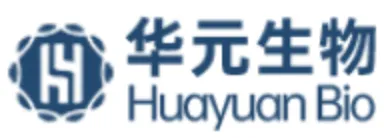Shenzhen Huayuan Biotechnology Company is an RNA therapeutic startup specialising in developing RNA drugs against RNA targets in type 2 diabetes and cancer. Leonard Lipovich, Chief Scientific Officer, of Shenzhen Huayuan Biotechnology got the ball rolling by explaining that protein coding genes only account for 1.5% of the 3.3 billion base pairs in the human genome. Lipovich expanded on this, explaining that humans have more noncoding RNA genes than coding RNA genes, and around 2/3 of human genes are composed of noncoding RNA.
Even though the majority of human genes are noncoding, most pharma companies stick to focusing on protein coding targets. Lipovich suggested that since long noncoding RNA genes are notoriously structurally and functionally complex, many biotechs are put off exploring their potential. However, Shenzhen Huayuan is an exception to the rule.
Lipovich performed agnostic discovery of all long noncoding RNA SNPs from all genes from 920 different human diseases. The team’s top hit was a previously uncharacterised long noncoding RNA. Further analysis unveiled that this hit is associated with type 2 diabetes and diabetes, which is expressed only in the liver. This gene has shown significant therapeutic potential in converting glucose into glycogen meaning it could replace insulin. This could potentially have remarkable consequences for diabetes patients and reshape scientific understanding of diabetes treatments.
Following basic safety and toxicity studies done with mouse data, Lipovich and his team proceeded to conduct animal trials on Macaca fascicularis monkeys in China. Monkey primary hepatocytes behave in the same way as human hepatocytes when it comes down to the knockdown of the long noncoding RNA. Lipovich declared the animal trials as a success since he observed reduced fasting glucose, increased levels of the desirable mRNA downstream target of this noncoding RNA, and interestingly reduced HbA1C in healthy monkeys over a six-month time period. These indicators suggest that the drug is effective in managing diabetes and obesity.
Taking this one step further, Lipovich administered the drug to a “sick monkey” (a monkey with Type 2 diabetes and a high-fat diet). After taking the drug the monkey’s BMI and body weight decreased of both by over 10%. From a competitor perspective, Lipovich explained that his drug has a critical edge because it offers a once-a-year injection regimen, which is more convenient and cost-effective compared to current GLP-1R agonists like Ozempic. Furthermore, because his drug relies on RNA which is sequence-specific whereas protein-based drugs are not, it avoids the side effects associated with protein-based drugs.
Looking ahead, Shenzhen Huayuan plans to adapt the drug for better human safety by repackaging it into exosomes or GalNAc. Lipovich is also looking to file an investigational new drug application (INDA) in China and start human clinical trials. They are actively seeking Series A funding to support these efforts.
